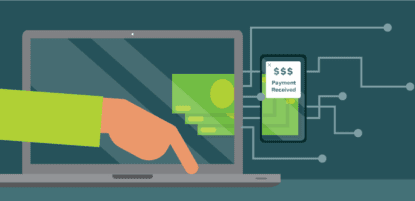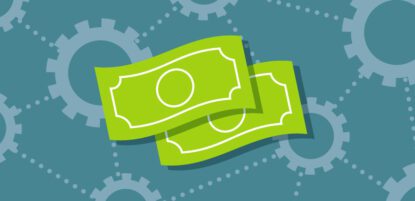Most finance professionals know that manual accounts payable (AP) processes are plagued with problems. However, many of the business people we speak with have a hard time articulating what it is about their AP process that’s so challenging, or worse, how these accounts payable challenges may be affecting their bottom line.
What are the Challenges of Accounts Payable?
Many businesses face challenges within their AP process, which can lead to inefficiency, errors, and increased costs. Some of the most common challenges faced by accounts payable departments include error-prone manual data entry and processing, lack of visibility, fraud, inefficient workflows, high costs, difficulty scaling, and maintaining compliance. Failure to address these challenges can significantly impact a business’s bottom line, reputation, and ability to compete.
6 Accounts Payable Pain Points
Accounts Payable teams are busy. In addition to coordinating payments for your business’s required goods and services, AP teams may also manage T&E (Travel and Expense), loan payments, and short-term liabilities. The accounts payable department also requires ongoing collaboration with the purchasing department and company suppliers. With all of these responsibilities, it is important for these hard-pressed teams to both save time and increase efficiency wherever possible.
Here’s a list of the most common problems plaguing businesses using manual, paper-based accounts payable processes.
1. Missing Invoices
Did the supplier send their invoice by mail, email, or fax? Who was it addressed to? Did they not receive it, or is it sitting on their desk waiting for approval? Manual AP processes often result in lots of finger-pointing between the AP manager, purchaser, and supplier.
In addition to causing friction between suppliers, unpaid invoices can cause significant problems when the payment hits the balance sheet late or the expense is coded to the incorrect income statement, leaving management with inaccurate financial information.
2. Lengthy, Manual Processes
From scanning paper invoices and manually keying in information to printing and signing paper checks, traditional AP processes are labor- and time-intensive. As businesses grow and scale, there’s less time to spend on tedious, error-prone processes.
Paper-based, manual processes lead to lengthy approval times and, ultimately, slower payments — especially if the AP department still sends checks by mail. When your business falls behind on supplier payments, it can kick off a series of problems, such as late fees, unfavorable terms from suppliers and lenders, and delayed shipment of goods.
3. Problems Scaling
“Our business is growing, but we don’t have the resources to hire another employee.”
We hear this one a lot. Growth is a really good thing, but a common side effect for rapidly expanding companies can be a lack of resources to support their growth. Many AP professionals don’t have the bandwidth to spend time manually processing more invoices and making payments.
In addition, processing invoice exceptions (due to incorrect, incomplete, or non-matching information) manually often requires several follow-ups and resolutions from multiple parties within the department. Discrepancies occur often and can be time-consuming to resolve. All of the time spent solving invoice exceptions, handing supplier inquiries to resolve issues, and tracking down missing information is time your AP team can use to focus on value-added activities for your business.
4. Physical Document Storage
AP document management can be a big problem for teams, especially if they still utilize paper-based methods. Businesses without electronic document storage rely on filing cabinets and banker boxes filled with paper invoices. In the digital age, your finance departments shouldn’t be digging through paperwork to track down invoices.
The fact that relevant documents are often produced in a variety of systems and formats, from a range of sources, and are often physically stored inside of a room filled with filing cabinets leads to several problems for accounts payable — including rising storage and labor costs, and unnecessary difficulty in tracking documents and performing audits.
5. Duplicate Invoices
Was this invoice processed already? From our conversations with customers and prospective clients, we know that AP managers are asked this question far too often. To make matters worse, AP departments that use manual processes tend to have little visibility into the status of invoices and cannot answer these questions.
Duplicate payments can occur for several reasons, many of which are related to manual data entry. Discrepancies in manually entered supplier information, invoice amounts, or coding can cause a single invoice to be paid twice.
6. Fraud
Since AP handles external payments, it is often a target for fraudsters. Many bad actors are using more sophisticated ways to access company funds. These methods can include a range of vendor fraud, invoice fraud, BEC emails, and CEO fraud. Additionally, many AP teams are at a disadvantage when they use more manual payment means such as checks. According to our State of AP Report, 33.3% are using checks for over half of all payments. However, AFP reports that 63% of companies reported fraudulent activity in relation to checks.
The Cost of Accounts Payable Problems
Many accounts payable issues arise from outdated practices involved in paper-based, manual invoice processing: keying in line items, writing paper checks, and maintaining manual records and spreadsheets. The slower, more costly process of making B2B payments with paper checks and the resulting errors and delays of manual invoice processing can cause serious problems for your business.
Here are just a few of the ways that problems in accounts payable can add up according to the IOFM:
- Only 4% of businesses that manually process fewer than 50,000 payments per year pay all of their purchase order-based invoices on time.
- Only 3% of businesses that manually process fewer than 20,000 payments per year pay all of their non-PO-based invoices on time.
- Companies that manually process fewer than 20,000 payments per year have a median cost per invoice of $15.97. Those that use automation have a median cost per invoice of $12.98.
- Only 25% of businesses that manually process between 20,000-100,000 payments per year pay all of their purchase order-based invoices on time.
- Only 40% of businesses that manually process between 20,000-100,000 payments per year pay all of their non-PO-based invoices on time.
- Companies that manually process between 20,000-100,000 payments per year have a median cost per invoice of $6.10. Those that use automation have a median cost per invoice of $4.24.
How to Solve Accounts Payable Challenges
Effectively managing accounts payable (AP) is crucial for businesses to maintain financial stability, strong vendor relationships, and overall operational efficiency. Here are some of the top ways your business can streamline your AP processes and solve the most common challenges.
1. Remove Manual Processes
To realize more efficient and centralized accounts payable processes, your business needs to move away from paper, manual data entry, and leave spreadsheets in the past. Accounts payable software, like MineralTree’s Invoice to Pay, increases efficiency, reduces the risk of disappearing invoices or duplicate payments, and gives business stakeholders better visibility into the timing and frequency of supplier payments.
2. Go Paperless
It’s time to go paperless. By eliminating manual data entry and piles of paper invoices, your accounts payable team can solve costly problems such as slow processing time and high error rates. Electronic invoices and payments can be automatically imported into accounting software, optical character recognition (OCR) can scan and digitize remaining paper invoices, and software can easily track the end-to-end accounts payable process.
3. Store Documents Digitally
AP automation software can help to manage this crucial aspect of the accounts payable workflow by storing all documentation in one central location. A fully automated process also encompasses routine steps such as receiving invoices, coding, approval routing, payment, and reconciliation. By integrating your new accounts payable automation software with your business’s ERP (Enterprise Resource Planning) and other core business systems, you can ensure that all systems operate from the same data, facilitating crucial financial reports and analysis.
4. Leverage AP Automation
The solution to your business’s accounts payable problems is accounts payable automation software. AP automation software can be used to codify efficient processes and workflow and automatically route invoices to the right department head at every stage of the AP process. Every accounts payable team should have a defined workflow that includes recording invoices, matching them with POs (Purchase Orders), approving invoices, and scheduling payments. A defined and streamlined accounts payable process reduces the likelihood of the same supplier invoices routing through multiple channels, of data entry errors, and lost invoices — all of which are opportunities for duplicate invoices. AP automation solutions, like MineralTree, also offer duplicate invoice detection.
Automating your accounts payable process will improve quality, accuracy, and speed. If your business is scaling, it’s important to identify problems and processes that might seem manageable today but might crumble beneath the pressure of higher invoice volume tomorrow.
How Can AP Automation Help Reduce Costs?
It’s clear to see that transitioning from manual, paper-based processing to a highly automated accounts payable system can significantly help businesses save money. But where do these savings come from?
Much of the high cost-per-invoice in manual AP departments comes from manual processing, frequent delays, and employee labor. The longer it takes to process invoices and the more employees are involved in AP processing, the higher the cost gets.
Accounts payable automation streamlines invoice processing. And because it takes less time to process each invoice, costs go down. Most AP departments that automate also need fewer employees focused on manual invoice processing, freeing up their time for more forward-thinking, value-added activities.
Final Thoughts
Clearly, accounts payable managers and their teams juggle a myriad of problems and pain points due to disorganized AP processes and outdated systems. However, the solution to reducing these inefficiencies and discrepancies is by streamlining accounts payable processes with AP automation.
Are you feeling these pain points? If so, it might be time to consider automating your accounts payable process to eliminate them, save time and energy, and begin contributing to the more strategic initiatives that fuel your business.
Ready to see what your team would look like with AP Automation? Schedule a demo to see how MineralTree’s AP Automation solution can streamline your accounts payable processes.
AP Challenges Frequently Asked Questions
What are the Key Risks in Accounts Payable?
The top accounts payable risks you need to look out for include:
- Internal Fraud
- Missing or Late Payments
- Conflicts of Interest
- Duplicate Payments
- Lack of an Audit Trail
- Poor Visibility into Invoice Payments
What Factors Affect Accounts Payable?
Many factors can affect the accounts payable process, including outdated accounts payable practices, like relying on paper invoices, writing checks, and keeping records in manual spreadsheets. This process in itself can lead to a host of problems, making it harder to manage costs, track expenses, and keep suppliers happy.
Why is Accounts Payable Hard?
Accounts payable is a lengthy and intricate process, involving invoice data capture, invoice coding, purchase order matching, securing approvals, and finally making payments. All these steps together can make for a time-consuming process, if conducted manually.




